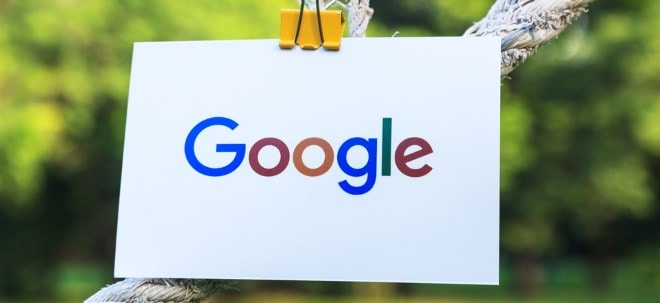Ferrari vs. Porsche: Which Luxury Icon Leads the Road Ahead?
Werte in diesem Artikel
Ferrari N.V. RACE and Porsche Automobil Holding SE POAHY sit at the peak of the performance-luxury market, shaping an automotive segment where engineering precision blends with brand emotion and customer loyalty. Both companies have deep motorsport roots, global followings and strong design identities that keep demand steady even in uncertain markets. Yet, their business philosophies differ sharply, making them natural candidates for a head-to-head comparison at a time when luxury autos face shifting consumer expectations, electrification pressures and macro volatility.Ferrari continues to define ultra-luxury exclusivity through scarcity and disciplined pricing, while Porsche operates with broader scale, a wider product portfolio and deeper exposure to evolving mobility trends. Each strategy has strengths, but they also create different financial outcomes and risk profiles for investors monitoring long-term growth, margin durability and valuation resilience.Since the high-end auto market is currently seeing big changes in performance technology, electric strategies, and global buying habits, comparing these two iconic brands side-by-side is more important than ever. Now, let’s take a closer look at how each company is fundamentally positioned—and what that means for investors.The Case for Ferrari StockFerrari’s investment story continues to rest on exclusivity, pricing strength and remarkable brand equity. The company intentionally restricts production to preserve scarcity, and that strategy continues to generate multi-year order books that stretch into 2027. Even as the stock has seen recent volatility, the underlying demand environment remains exceptionally strong, supported by a customer base that is both loyal and affluent. Models like the Purosangue have broadened Ferrari’s reach without weakening its identity, while ongoing hybridization and a fully electric model on the horizon assure controlled long-term growth.Personalization plays a central role in Ferrari’s margin superiority. Each vehicle comes with personalized customization choices, lifting revenue quality and helping the company maintain EBITDA margins that far exceed traditional automakers. Ferrari’s ability to raise prices without denting demand reflects its near-unmatched pricing power, and management continues to build on that momentum through steady product innovation and disciplined capacity management. The company’s financial structure — low leverage, strong free cash flow and a multi-year buyback program — adds further resilience, supporting steady per-share metrics even during market pullbacks. Overall, Ferrari’s long-term strategy continues to rest on strong visibility, carefully managed supply, and a brand whose demand reliably converts into steady, resilient earnings.The Case for Porsche StockPorsche offers a distinct proposition: a larger addressable market, broader product lineup and more diverse revenue channels. As part of a wider mobility ecosystem, Porsche SE has exposure not only to Porsche AG but also to a growing technology-focused portfolio in areas such as e-mobility, connectivity, AI and smart manufacturing. Over the past few years, the investment platform has expanded meaningfully, providing new sources of potential long-term value and partial insulation from auto-market cyclicality.Dividend coverage remains a key support for Porsche SE. Despite weaker earnings contributions from Volkswagen AG and Porsche AG, expected inflows remain sufficient to sustain its payout, with coverage set to remain intact even through a challenging operating cycle. This provides a degree of income reliability at a time when volatility across the European auto sector is elevated. Porsche SE also enjoys meaningful financial flexibility, carrying nearly €1.3 billion in cash and maintaining the optionality to add a third major holding outside its traditional footprint. This could broaden the company’s future earnings drivers and diversify it from its core automotive concentration.However, Porsche faces clear challenges. Profitability at Volkswagen and Porsche AG has weakened, dragging on group results and contributing to downward guidance revisions. The strategic pullback in EV planning introduces additional uncertainty, particularly as global EV adoption accelerates. Concentration risk remains significant, and market sentiment has been pressured by impairments, margin compressions and a weaker automotive backdrop. Even so, Porsche SE’s valuation discount, stability of dividend inflows and potential for broader portfolio expansion offer elements of support for long-term investors.Price PerformancePorsche is up about 14% year to date, while Ferrari is down roughly 10% over the same period. The contrasting performance reflects not only company-specific developments but also shifting investor sentiment in luxury autos, with Ferrari’s recent pullback driven largely by broader market anxiety rather than fundamental deterioration. Image Source: Zacks Investment ResearchValuation ComparisonOn a forward 12-month price-to-earnings basis, Ferrari trades around 33.6X, substantially higher than Porsche’s 5.5X. Ferrari’s premium multiple reflects its superior margins, controlled volumes and higher earnings visibility. The gap underscores the market’s view that Ferrari operates more like a luxury brand than a traditional automaker. Image Source: Zacks Investment ResearchEPS EstimatesFor 2025 and 2026, Porsche’s earnings per share are expected to decline 78% and then rebound 242%, highlighting a period of volatility. Image Source: Zacks Investment ResearchFerrari shows steadier projections, with expected EPS growth of 15% and 9% over the same years, reflecting stronger consistency and demand durability. Image Source: Zacks Investment ResearchConclusionFerrari offers unmatched brand strength, exceptional margins, and one of the most resilient demand profiles in the consumer discretionary sector. Porsche provides diversification, dividend stability and deeper exposure to high-growth mobility technologies, but faces near-term earnings pressure and concentration risk. Given their rankings — Ferrari at Zacks Rank #3 (Hold) and Porsche at Zacks Rank #4 (Sell) — Ferrari appears better positioned at this moment due to its steadier earnings trajectory, superior pricing power and more predictable margin structure.You can see the complete list of today’s Zacks #1 Rank (Strong Buy) stocks here.Radical New Technology Could Hand Investors Huge GainsQuantum Computing is the next technological revolution, and it could be even more advanced than AI.While some believed the technology was years away, it is already present and moving fast. Large hyperscalers, such as Microsoft, Google, Amazon, Oracle, and even Meta and Tesla, are scrambling to integrate quantum computing into their infrastructure.Senior Stock Strategist Kevin Cook reveals 7 carefully selected stocks poised to dominate the quantum computing landscape in his report, Beyond AI: The Quantum Leap in Computing Power.Kevin was among the early experts who recognized NVIDIA's enormous potential back in 2016. Now, he has keyed in on what could be "the next big thing" in quantum computing supremacy. Today, you have a rare chance to position your portfolio at the forefront of this opportunity.See Top Quantum Stocks Now >>Want the latest recommendations from Zacks Investment Research? Today, you can download 7 Best Stocks for the Next 30 Days. Click to get this free report Ferrari N.V. (RACE): Free Stock Analysis Report Porsche Automobil Holding SE Unsponsored ADR (POAHY): Free Stock Analysis ReportThis article originally published on Zacks Investment Research (zacks.com).Zacks Investment ResearchWeiter zum vollständigen Artikel bei Zacks
Ausgewählte Hebelprodukte auf Ferrari
Mit Knock-outs können spekulative Anleger überproportional an Kursbewegungen partizipieren. Wählen Sie einfach den gewünschten Hebel und wir zeigen Ihnen passende Open-End Produkte auf Ferrari
Der Hebel muss zwischen 2 und 20 liegen
| Name | Hebel | KO | Emittent |
|---|
| Name | Hebel | KO | Emittent |
|---|
Quelle: Zacks
Nachrichten zu Porsche Automobil Holding SE
Analysen zu Porsche Automobil Holding SE
| Datum | Rating | Analyst | |
|---|---|---|---|
| 11:41 | Porsche Automobil Halten | DZ BANK | |
| 12.11.2025 | Porsche Automobil Buy | Deutsche Bank AG | |
| 04.11.2025 | Porsche Automobil Neutral | UBS AG | |
| 22.10.2025 | Porsche Automobil Hold | Warburg Research | |
| 01.10.2025 | Porsche Automobil Buy | Deutsche Bank AG |
| Datum | Rating | Analyst | |
|---|---|---|---|
| 12.11.2025 | Porsche Automobil Buy | Deutsche Bank AG | |
| 01.10.2025 | Porsche Automobil Buy | Deutsche Bank AG | |
| 13.08.2025 | Porsche Automobil vz Buy | Deutsche Bank AG | |
| 09.12.2024 | Porsche Automobil vz Buy | Deutsche Bank AG | |
| 09.09.2024 | Porsche Automobil vz Buy | Deutsche Bank AG |
| Datum | Rating | Analyst | |
|---|---|---|---|
| 11:41 | Porsche Automobil Halten | DZ BANK | |
| 04.11.2025 | Porsche Automobil Neutral | UBS AG | |
| 22.10.2025 | Porsche Automobil Hold | Warburg Research | |
| 14.08.2025 | Porsche Automobil vz Halten | DZ BANK | |
| 27.05.2025 | Porsche Automobil vz Market-Perform | Bernstein Research |
| Datum | Rating | Analyst | |
|---|---|---|---|
| 10.03.2025 | Porsche Automobil vz Sell | Goldman Sachs Group Inc. | |
| 14.01.2025 | Porsche Automobil vz Sell | Goldman Sachs Group Inc. | |
| 09.12.2024 | Porsche Automobil vz Sell | UBS AG | |
| 03.12.2024 | Porsche Automobil vz Underweight | Barclays Capital | |
| 03.10.2024 | Porsche Automobil vz Underweight | Barclays Capital |
Um die Übersicht zu verbessern, haben Sie die Möglichkeit, die Analysen für Porsche Automobil Holding SE nach folgenden Kriterien zu filtern.
Alle: Alle Empfehlungen


